- +591 - 2301375

Welcome to Bolivian Mountaineering
Here you will find reliable information about trekking and mountaineering in Bolivia.
Climb the Mountains of Bolivia
We can help you to plan your next adventure. Come and enjoy our beautiful country.
Mountaineering
Bolivia has amazing mountains, suitable for all experience levels.
Bespoke Itineraries
Flexible travel planning, designed to suit your interests and level of experience.
Untouched landscapes to explore: glaciers, deserts, volcanoes and more.
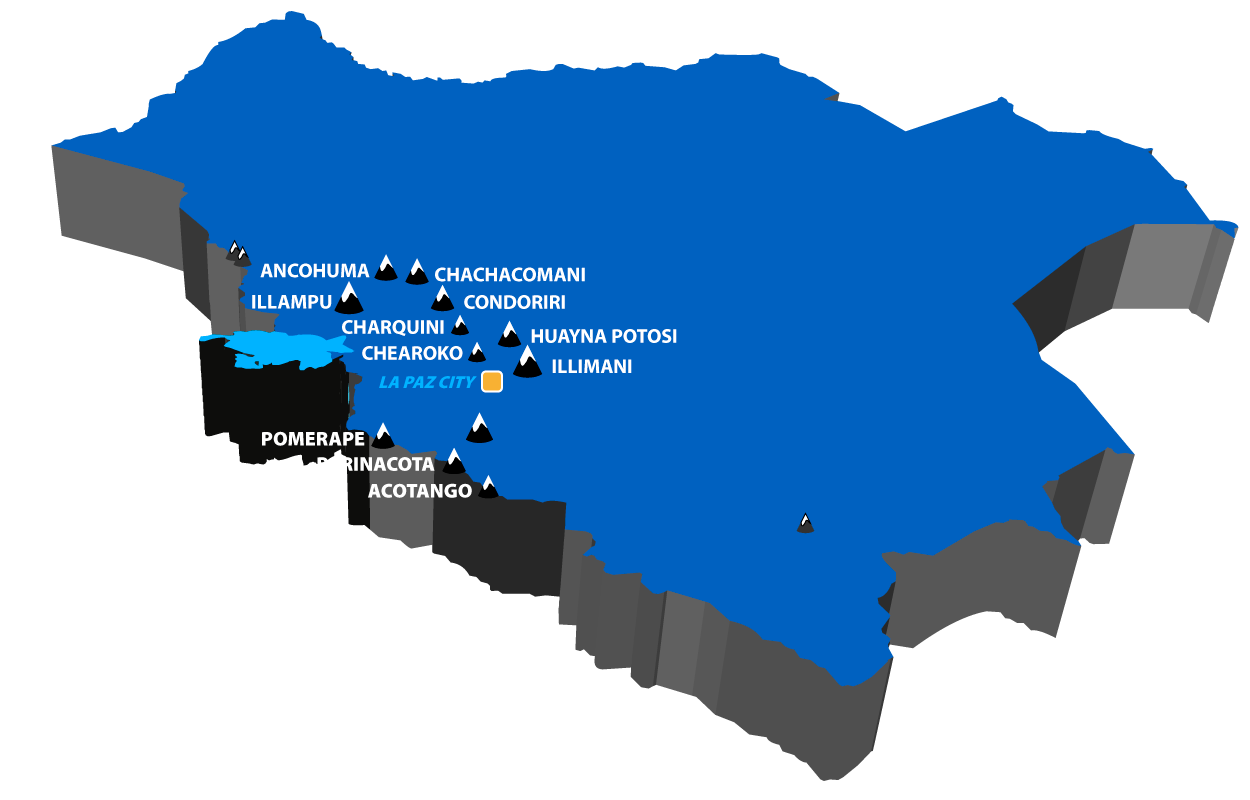
The Bolivian Mountains
Seven summits in bolivia, the most popular mountains in bolivia.
We have high altitude mountains suitable for everyone, whether you’re a beginner who’s never worn crampons, or an experienced mountaineer looking for a new challenge.
If you’d like to climb a mountain not on this list, please get in touch!

21,463 feet
( 6.542 msnm ).
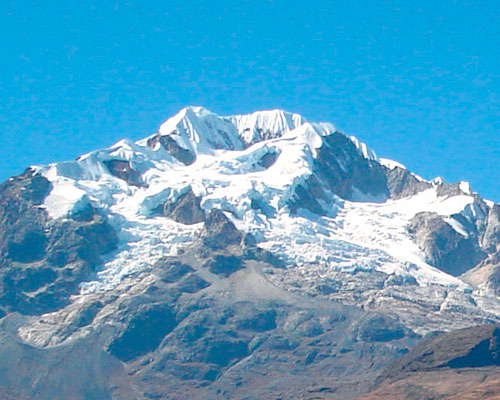
21,276 feet
( 6.485 msnm ).

21,200 feet
( 6.462 msnm ).
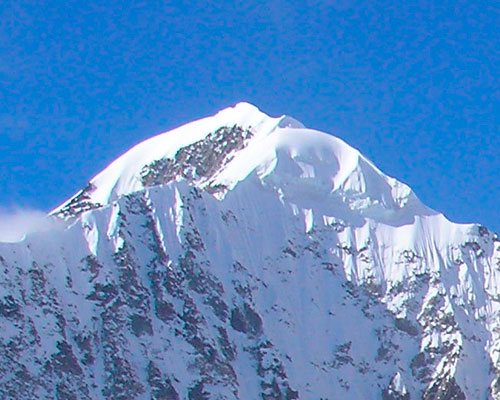
21,085 feet
( 6.427 msnm ).
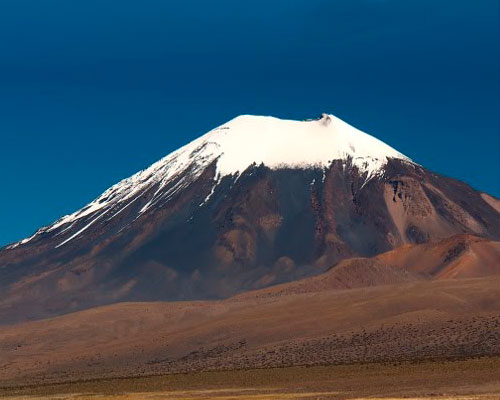
20,826 feet
( 6.348 msnm ).
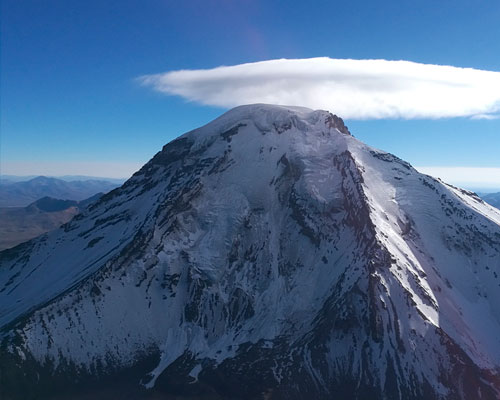
20,610 feet
( 6.282 msnm ).
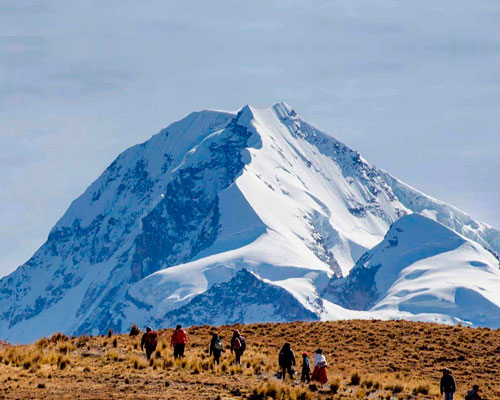
Huayna Potosi
19,973 feet, ( 6.088 msnm ), welcome to the bolivian mountains, discover bolivian mountains.

"The Bolivian mountains are waiting for you..."
PICO Austria 5300M. (17,383 feets)
Meet our team.
Our team is professional trainer from Bolivia and Foreneing persona.
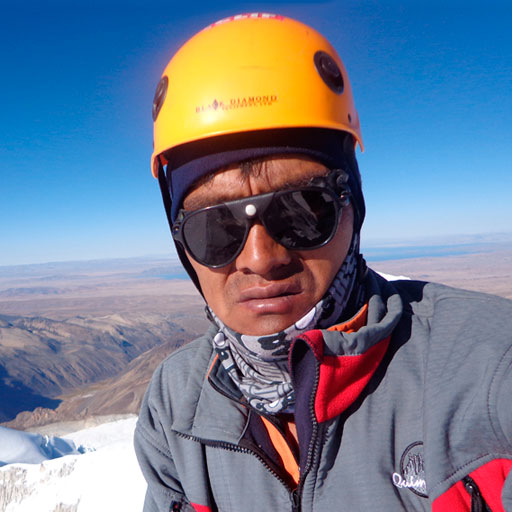
International Mountain Guide

Nationally Certified Guide
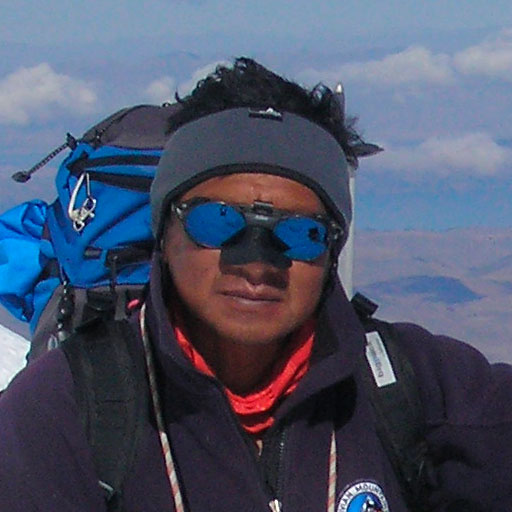
Company doctor
Pedro is our director and coordinator at “Bolivian Mountaineering”. Having being raised in a family of guides, his great experience precedes his reputation in the high altitude mountaineering community in Bolivia.
With an early start in the world of mountaineering, Pedro has lead several successful expeditions to most of the major mountains in Bolivia. Being a lover of mountains and nature he will be the right guy for those looking for new routes as well as challenging technical ones. As a friendly and fun person (yes, he speaks English!!!), Pedro has taken care of VIP while working for the most prominent tour companies of Bolivia…… Pedro in short, is a true mountain man.
Meet Julio, our guide’s leader. Just like Pedro, Julio`s family has a rich heritage in the mountaineering world.
His certification as a mountain guide given by the IFMGA (International Federation of Mountain Guides Association) along with the fact he is part of the only high altitude mountaineering rescue team (SOCORRO ANDINO BOLIVIANO) in the country makes Julio a very trustworthy guide in the mountains. Combine this with a friendly attitude and great experience leading successful expeditions to the major Bolivian peaks and you get one of the most requested guides in the country. We are certainly glad to have Julio in our staff list.
Living in the area under Sajama National Park, Mario is our supporting guide for the majestic volcanoes in the region where he is constantly guiding teams to reach Bolivia`s roof top.
His experience in the Bolivian Andes is accompanied by expeditions to the other side of the border in Chile where he has lead groups to Ojos del Salado, South America`s second highest mountain. Mario is known for his versatility and strength.
Local Medical Support - Company doctor
Josue obtained his degree in medicine from the most prestigious institution of the country “Universidad Mayor de San Andres” in La Paz.
His research on physiology at high altitude has helped several local and foreign athletes in their high altitude expeditions by providing treatment to conditions which may arise before and after their journey into the heights of the Andes. Due to his experience in mountaineering and his fluency in English Josue is a very important member of our team providing support at both base and high camps. His presence in our team reassures our compromise with safety and we are very proud to count with Josue in “Bolivian Mountaineering”.
We are the Best
Certified guides with extensive experience and training. We regularly open new technical routes
20+ year relationships with local villages, cooks, porters, and donkey-drivers.
Trusted by universities, embassies, and travel consultants worldwide.
Flexible itineraries to suit your needs and level of experience.
High altitude mountain hut
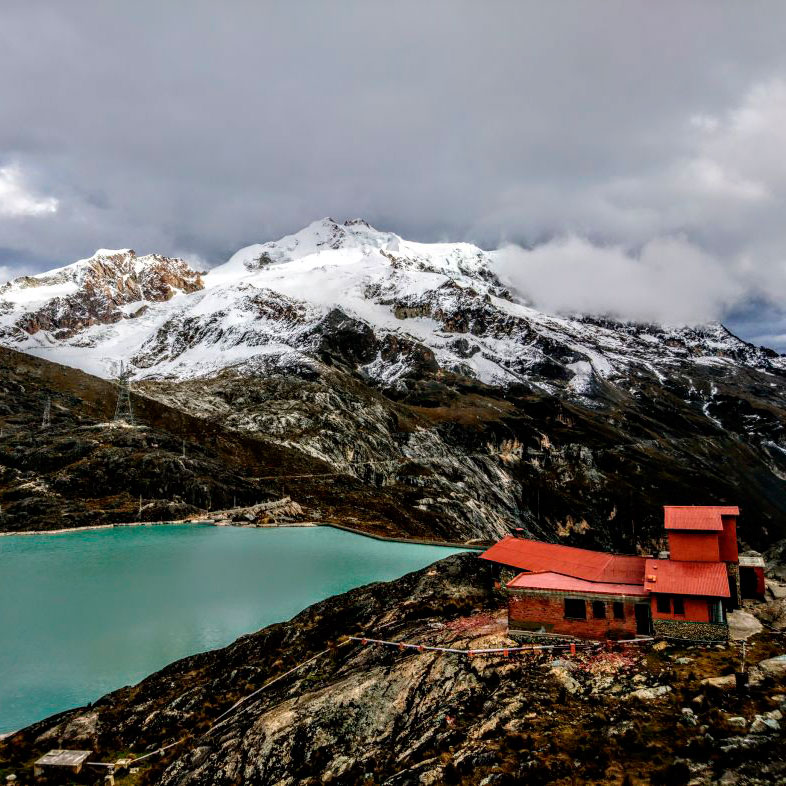
THE MOUNTAINEER’S HOUSE
This hut, at 5130m altitude, serves as the high camp for Huayna Potosi. This mountain is the most popular in Bolivia and sleeping space is limited in the high season. We have a longstanding relationship with the Mountaineer’s House : they guarantee our clients will always have a bed.

THE FISHERMAN’S HOUSE
This newly built hut provides a perfect base from which to discover the Condoriri valley, which holds some of Bolivia’s most varied climbing and trekking. We are proud to be able to offer our clients access to the best accommodation in the area.
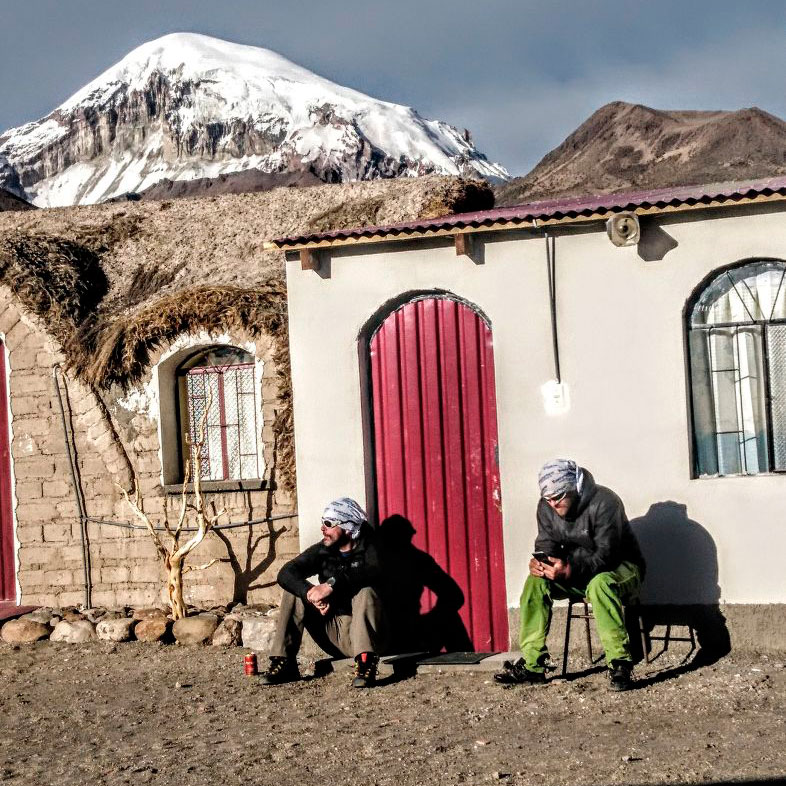
POSADA PANATURA MARIANA
Located in Sajama National Park, Posada Panatura Mariana is a cozy, comfortable base to explore the nearby volcanoes. It is owned and run by one of our guides (Mario) and his wife: you’ll be very well looked after!
Bolivian Mountaineering is a company specialising in high altitude mountaineering and expeditions throughout Bolivia. Whether you are a tourist, mountaineer, or corporate client, we will give you the best quality service available in Bolivia’s mountain
We are mountaineering experts
We are one of the few agencies in the country to use exclusively certified mountain guides. Many of our guides are part of the national Mountain Rescue team.
We love our mountains
We want you to fall in love with them too! No matter your experience level, we can design an unforgettable itinerary for you.
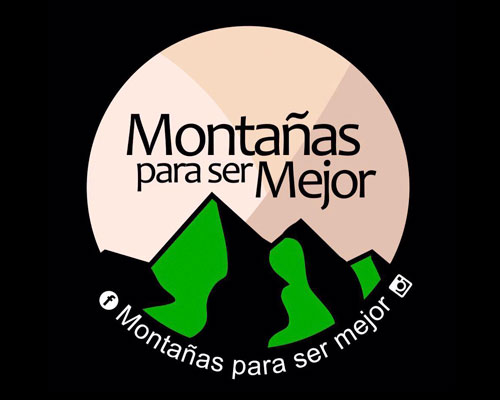

Let travel lead you to discover new high-altitude adventures
Discover and explore bolivian's andean mountains.
Choose your next adventure
Cordillera Real
Huayna potosi, pequeño alpamayo, cabeza del condor, chachacomani, cordillera occidental, latest adventures.
Don’t miss out on the latest high-altitude adventures
Our services
What do we do?
Mountain Climbing
The high-altitude mountain is an extreme activity, and in Bolivia, we have mountains and peaks over 5000 meters. Our team is prepared to give you the best experience in the Cordillera Real.
Hiking and Trekking
From easy trails to the entire Cordillera Real and Occidental, we offer them for all types of people. We understand that acclimatization is important, and what better way to do it than being surrounded by mountains?
Customized itinerary
Don’t worry about the hassle of planning the perfect trip. Tell us your plans, and we will make your dreams come true. Our service is flexible, friendly, and comfortable for you.
Bolivia Discovery is a company specialized in high mountain guides. We offer unique and safe experiences thanks to our UIAGM/IFMGA certified guides and highly trained team. We strive to discover the natural beauty of Bolivia and share it with our clients. We are adventure lovers, eager to discover more and more, make it different. Live with us an unforgettable experience!

Meet the staff
To pay tribute to gregorio mamani quispe..


Bolivian Mountain Guides
Discover the Bolivian Mountains with us!
Due to a lack of accurate and updated information on trekking and climbing, Eduardo Mamani Q., a mountain guide with international certification (UIAGM / IFMGA) created this site where you will find all the information and assistance you require.
We specialize in high altitude, mountaineering, climbing and trekking expeditions in the Cordillera Real de los Andes – the mountain range surrounding La Paz, Bolivia. Our services are second to none, we boast a team of some of the finest, most knowledgeable, most experienced guides in the country together with only the highest quality technical equipment.
Whether you are looking for a tailor-made package for your visit to Bolivia or merely wish to ensure that your time on the mountain is organised with quality and expertise, you should take time to study our range of options – to enjoy the photos and videos if nothing else – and contact us with any further questions or to make a reservation.
Blog archives
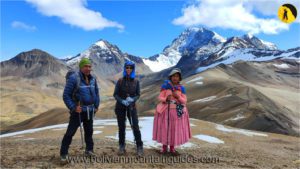
Ajuani – Huayna Potosi ( Monica Gorman)
Ajuani – Huayna Potosi – 6 days (Monica Gorman) Eduardo, Monica and Lourdes finishing the trekking. Monica say: Fantastic guiding company! The best I have
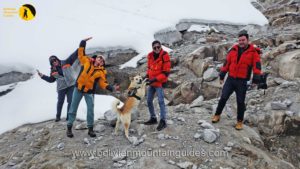
Wila Lluxita – Full day
Wila Lluxita – Full day Marciely Justiniano say: Una de las experiencias más bonitas que realice este año a más 5000 msnm, y también uno
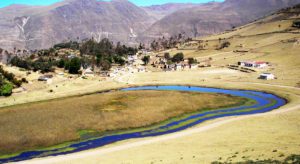
Trek Apolobamba (Curva – Pelechuco) (7 days)
Region of the Kalawayas healers, a mystical place of majestic snow-capped mountains. This mountain range is still unknown to the general public. Itinerary: Day 1.-
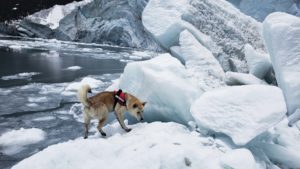
Trek Juri Khota – Laguna Glacial (Full Day).
Trek Juri Quta – Laguna Glacial Cuchill Khunu (Full Day) Laguna Juri Quta (4.687 m.) We begin our journey at 6 in the morning, immersing
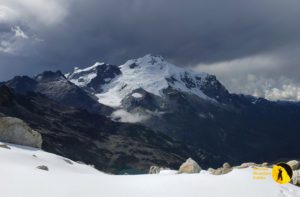
Charquini -Ruta Norte (Full day).
Charquini – North route (Full day) Eduardo, Huayna Potosi as seen from the Charquini. We started our trip from the city of La Paz very
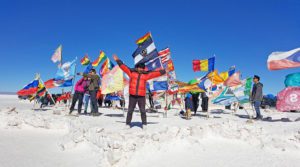
Trek Khotya – Huayna Potosi – Salar de Uyuni
Scheduled group dates.
We are able to accommodate both trekking and climbing expeditions on dates that suit you, as long as our guides are available. Most trekking tours are classified as medium difficulty and require a certain level of fitness for all participants. Additionally, for all climbing expeditions, we recommend good acclimatization. We have a number of fixed travel dates for our most popular climbing routes for those who want to join other climbers. The service is similar to our private trips, but since you will be part of a group, the cost may be a bit lower. Group sizes are a minimum of 2 and a maximum of 10 (for safety reasons, one guide to two clients). If you’re interested in joining one of our group outings, please contact us and specify which program you’re interested in. Please note that if there is only one person on a scheduled date, we will continue the itinerary as planned. We will also keep you informed of other similar expeditions in case you prefer to join a different group.

- +591 77580433
- [email protected]
Copyright © 2022 Bolivian Mountain Guides. All rights reserved.
¿Olvidaste tu contraseña?
Lost your password? Please enter your email address. You will receive mail with link to set new password.
Atrás para iniciar sesión
Thanks for getting in touch with Bolivian Mountain Guides!
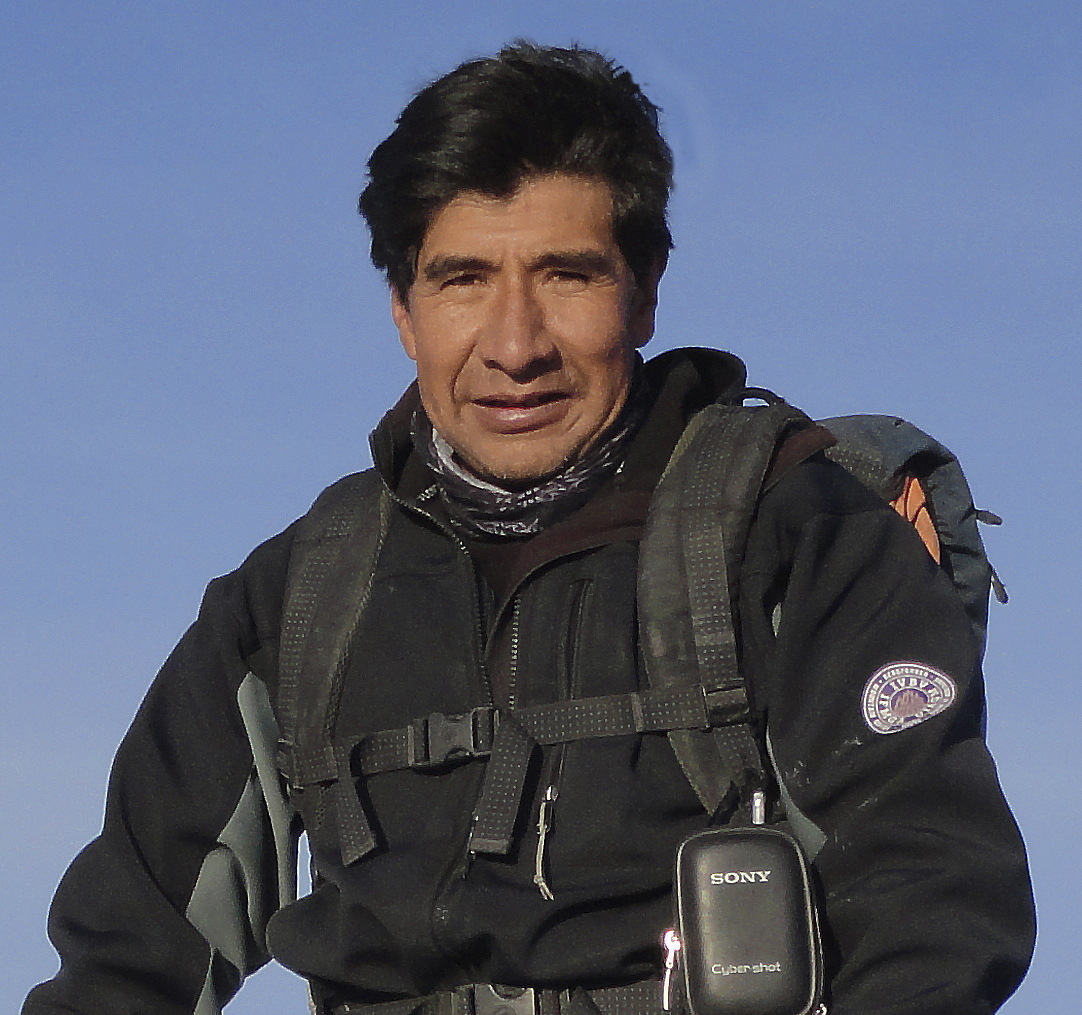
We'll try our best to help you organize your next travel in Bolivia.
- BOOK YOUR NEXT TRIP
- 206.378.1927
- GEAR SHOP ACCOUNT

Great Peaks of Bolivia
Chachacomani (19,928 ft./6074 m) - pequeño alpamayo (17,618 ft./5,370 m) - illimani (21,125 ft./6,439 m), illimani extension, reading list.
- Guide's Webinar
Climb Great Peaks of Bolivia With Alpine Ascents
A proper superlative is hard to find as all fail to do justice to the experience. The experience was all I could have asked for. First and foremost the climbing was interesting and challenging, and summiting Pequeño Alpamayo and Chachacomani gave me a great sense of accomplishment. The cultural experience was also enriching and enhanced greatly by Rachael’s knowledge and experience. In short the climbing was great, the guides were fantastic, logistics were handled smoothly and efficiently, and my climbing team was a joy. >>See More
Our new itinerary launched in 2018 was a huge success in 2018 -2023 we are looking forward to 2024 departures with Bolivia expert Rachel Molstad as lead guide.
Bolivia’s Cordillera Real (Royal Range) contains seven peaks above 6,000 meters and over 600 peaks above 5,000 meters, all packed within a range that stretches a mere 78 miles/125 km in length. Despite the immensity of climbing possibilities, Bolivia’s premier mountain range remains one of South America’s best kept climbing secrets. This is a new itinerary designed by our Bolivian climbing expert Rachel Molstad.
An expedition to Bolivia provides the opportunity for climbers to make the transition to high altitude climbing in a spectacular and exotic range that offers fine routes at an intermediate grade. In addition to easy accessibility to big peaks, Bolivia also boasts some of the most stable mountain weather in the world. As the tourism infrastructure in Bolivia is behind that of other neighboring Andean countries, travel here is well-suited to the adventurous; the intrepid traveler to Bolivia will find endlessly fascinating cultural depth, authenticity, and natural beauty.
The climbing was challenging in the best ways, the guides were great, and the logistics smooth.
The goal of this expedition is the ascent of two peaks in the Cordillera Real chosen for their beauty, accessibility, quality of climbing, and usefulness as a training ground for future high altitude expeditions: Pequeño Alpamayo (17,618 ft./5370 m) and Chachacomani (19,928 ft./6074 m).
We’ll begin our expedition in La Paz, the world’s highest capital city, which sits at 11,975 ft./3650 m in a spectacular setting. As we acclimatize, we’ll ride the world’s highest and longest cable car network across the city with views of the Andes and the rugged city hillsides. On our way to Lake Titicaca the next day, we’ll explore Tiwanaku, a UNESCO world heritage site, and Bolivia’s most important archeological site. Finally we reach beautiful Lake Titicaca, one of the highest navigable lakes in the world and the second-largest lake in South America. We spend the night at the bright town of Copacabana and visit the Island of the Sun (Isla del Sol) the next day. We’ll continue our acclimatization by hiking from the northern to the southern end of the picturesque island, spending the night in bungalows at a locally run ecolodge.
Upon leaving Lake Titicaca, we begin our expedition to three beautiful mountains. These moderately difficult ascents constitute an ideal trip for mountaineering school graduates, beginners at high altitude, and experienced climbers alike. We will warm up on the pyramidal Pico Austria (17,454 ft./5320 m), which offers us a marvelous view of the Condoriri Group.
After having completed a basic skills review and practiced some ice climbing, we proceed to the impressive and beautiful Pequeño Alpamayo (17,618 ft./5,370 m). The steep fluted faces and knife-edge ridges of this pyramid-shaped peak allow us to enjoy unique and spectacular climbing.
Our final objective is Chachacomani (19,928 ft./6074 m), a 6000 meter plus unspoiled peak only recently opened to tourism by the local community. Chachacomani sits in the heart of the Cordillera Real and is notable from afar for its immense expanse of glacier. Our final steeper ascent will place us high in the middle of the Cordillera Real with views over the barren altiplano and Lake Titicaca on one side to the sub-tropics and the Amazon basin on the other.
Along with the expected skills reviews on glacier travel, rope teams, etc, Rachel also had volumes of information to pass along to us about Bolivian culture and history (recent and ancient). She is a fantastic teacher, fueled by her passion for the mountains and for her home in Boliva. I can’t imagine a better person to lead this trip.
The Aymara People and the Altiplano
Bolivia is a land of geographical extremes and superlatives made all the more fascinating by the rich authentic cultural background found in daily life. A nation landlocked in the heart of South America, over sixty percent of Bolivia’s population is of indigenous descent, more than in any other country in South America. The altiplano, or high altitude plateau, we will explore during our expedition, is the land of the Aymara people. The Aymara trace their culture, language, and descendancy from the advanced pre-Incan Tiwanaku civilization. Today, the Aymara in the countryside raise alpaca and llama while living off potatoes, barley, and quinoa, which are grown in the altiplano.
Climb Great Peaks of Bolivia Prices
Bolivia Expedition $5,250.00 $1,450.00 Illimani Extension
Climb Great Peaks of Bolivia
May 17, 2025 - Jun 01, 2025 - 2+ Spaces Available Lead Guide: Rachel Molstad Jun 07 - 22, 2025 - 2+ Spaces Available Lead Guide: Rachel Molstad
Climbing Skill Level
Climbers should have successfully completed our 6-Day Training course, 8-Day , 9-Day , 10-Day , 12-Day , 13-Day or have equivalent skills and experience. They must have basic knowledge of progression on snow and ice, self arrest, crevasse rescue, and glacier travel. Snow and ice slopes to be dealt with are moderate (up to 45-55 degrees for 800 feet on Pequeño Alpamayo and up to 45-55 degrees on Chachacomani). Before attempting Pequeño Alpamayo we will review glacier skills on the Pirámide Blanca glacier. For the Illimani Extension, climbers additionally must feel comfortable walking along airy rocky, snowy and potentially icy ridges. The requirements are also based on our desire to have similarly skilled team members.
Pack Weight
Climbers must be able to carry an average of 30 lbs. or more.
Already acclimatized from Chachacomani, those interested in looking for further challenge can remain in this stunning region to attempt Illimani, the 21,125 ft./6,439 m giant overlooking La Paz’s southeastern skyline. Illimani is the highest mountain in the Cordillera Real and the second highest peak in Bolivia. Our climb will consist of two camps, climbing the West Ridge of Pico Sur, the highest peak of the massif. It is a challenging, steep climb that includes a heavily crevassed glacier. The ascent itself is spectacular, as the entire massif spans more than 5 miles/8 km and contains five summits, three of them over 20,000 ft./6100 m! This wonderful climb will give you the chance to stand over 21,000 feet, absorbing the grandeur that is Bolivia. Some climbers find Illimani more challenging than the prior climbs.
See our day-to-day itinerary .
This is a highly recommended shortlist and we would be happy to pass on a longer reading list for those interested. These links will bounce to Amazon.com with reviews.
Touching the Void: The Harrowing First Person Account Of One Man's Miraculous Survival

Peru and Bolivia : Backpacking and Trekking

Bolivia : A Climbers Guide

The Incas: Empire of Blood and Gold (New Horizons)

The Ancient Kingdoms of Peru

Watch our in depth discussion of our Bolivia Expedition with Bolivia guide, Rachel Molstad
A country of beautiful extremes, Bolivia is the highest, most isolated country in South America and holds a veritable treasure trove of climbing objectives for alpinists who venture off the beaten path. Particularly for climbers seeking to gain experience at altitude to prepare for objectives like Denali, Bolivia should not be overlooked. Despite the abundant climbing possibilities, Bolivia’s Cordillera Real (Royal Range) remains one of South America’s best kept climbing secrets.
On February 16th, Lead Guide and Bolivia Climbing Director, Rachel Molstad, shared details of our Great Peaks of Bolivia expedition including trip logistics, overviews of climbing Pequeño Alpamayo (17,618 ft./5370 m) and Chachacomani (19,928 ft./6074 m), as well as insider gear and expedition tips. The photos and climb overviews were absolutely stunning. For those who attended the presentation, the only question left unanswered was…when can I go to Bolivia?
It was well-organized, seamlessly integrated. Best guide I have had on any guided trip.

Great Peaks of Bolivia BLOG

Great Peaks of Bolivia Webinar
A country of beautiful extremes, Bolivia is the highest, most isolated country in South America and holds a veritable treasure trove of climbing objectives for alpinists who venture off the beaten path. Particularly for climbers seeking to gain experience at altitude to prepare for objectives like Denali, Bolivia should not be overlooked. Despite the abundant […]
WHY BOOK WITH ALPINE ASCENTS
Knowledge & expertise.
Alpine Ascents International leads expeditions that have become benchmarks of quality in the climbing community. We operate what we believe is the finest mountaineering school in the country. This expertise is based upon years of accumulated experience-not just from individual mountain guides, but through experience on particular mountains where details are fine-tuned over time.
Our guides are an integral part of Alpine Ascents because they understand and share our climbing principles. These individuals are dedicated to sharing their excellence with others. Many of our guides have been with Alpine Ascents for over five years, with a handful of veterans working with us for most of their careers. The quality of our Guide Staff is the primary difference between us and our competitors.
Environmental Reponsibility
Leave No Trace principles are fundamental to our program, and we encourage all who climb and trek with us to understand proper wilderness practices. We help facilitate this effort by passing on Leave No Trace training and literature to every Alpine Ascents climber.
Partners & Accreditations

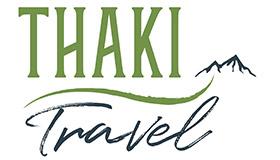
- +33 9 77 21 51 60 Call in Bolivia at the price of a call in France
- +591 2 215 60 82 Call in Bolivia at the price of an international call
- [email protected]
- thaki-bolivia
Tailor made trips and local travel agency in Bolivia
We are an adventure travel agency, specialized in Bolivia and expert in mountain climbing. We have an unbeatable pioneer spirit and offer tailor made trips, unique and quirky, everywhere in Bolivia but also in neighbour countries, like Peru, Chile and Argentina!
Thaki Travel's Adventure
Thaki Travel is a beautiful story born out of a passion for Bolivia , a different and captivating country ! It is together, in the highly perched city of la Paz, that two friends, Anne and Jérôme , have decided to found in 2011 an adventure travel agency true to themselves : human, dynamic, sporty and rich in sharing unique experiences ! With Thaki , which means “path” in Aymara language, wander around original and new paths in Bolivia ! Share with us your dreams, we will take care of the rest ! And of course, by travelling with us, your security is fully guaranteed.
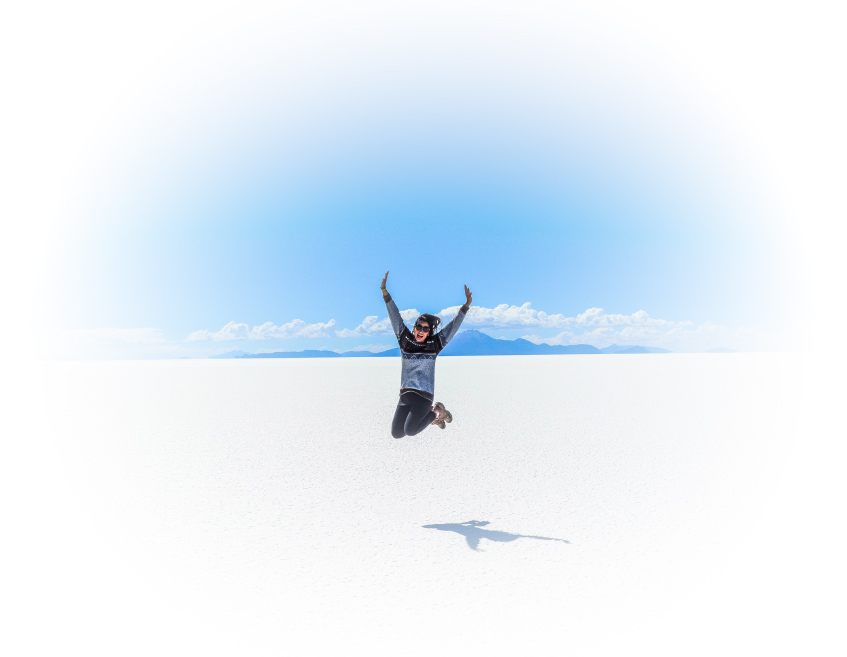
Discover the most beautiful landscapes of Bolivia, from the Atiplano to the Amazon, through Titicaca Lake, the largest Salt Flats in the world, La Paz city, the most beautiful mountain range, the Andes ... and other breathtaking surprises!

Find your perfect trip
By category.
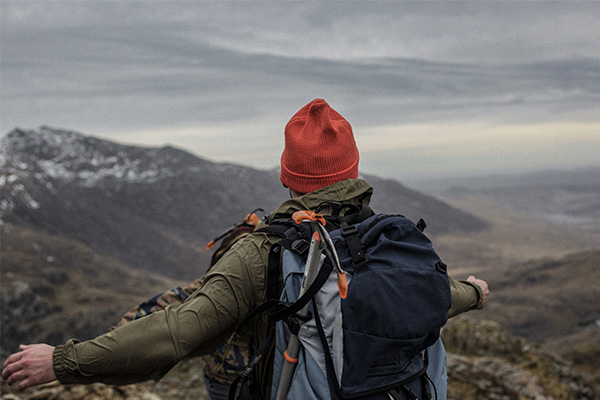
3 tours , from 14 to 22 days.

7 tours , from 8 to 42 days.
Luxury Experience
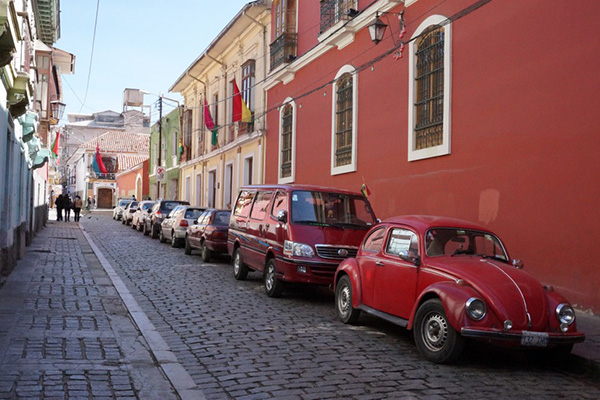
3 tours , from 22 to 42 days.
Multi countries
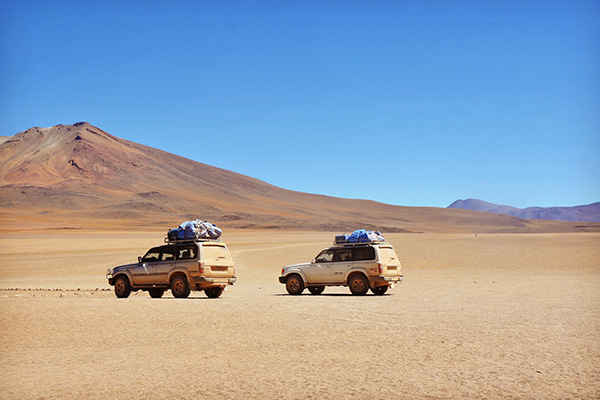
13 tours , from 2 to 22 days.

Discoveries and adventures

6 tours , from 3 to 16 days.
Andean Treks
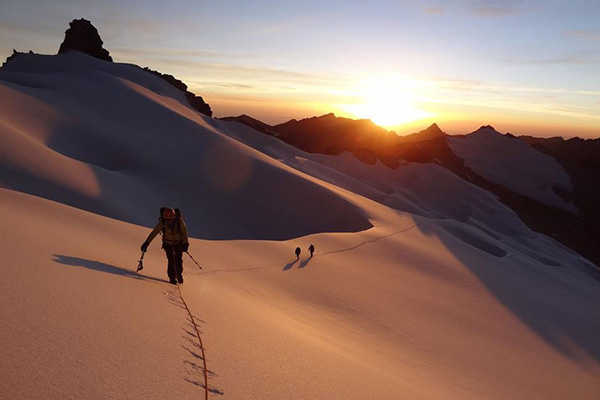
24 tours , from 2 to 21 days.
Mountains & Ascents

Choose your travel type
Latest reviews, from our travelers.

Dudognon family, France
Thaki Travel put together a magical 8-day trip to Bolivia. We let ourselves be c ...
Salomé and Julian, France
Excellent travel agency. Go straight with them. Our entire stay was wonde ...
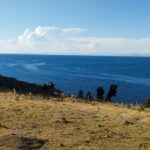
Dominique, France
From mid-September to early October 2023, we enjoyed an exceptional trip thanks ...
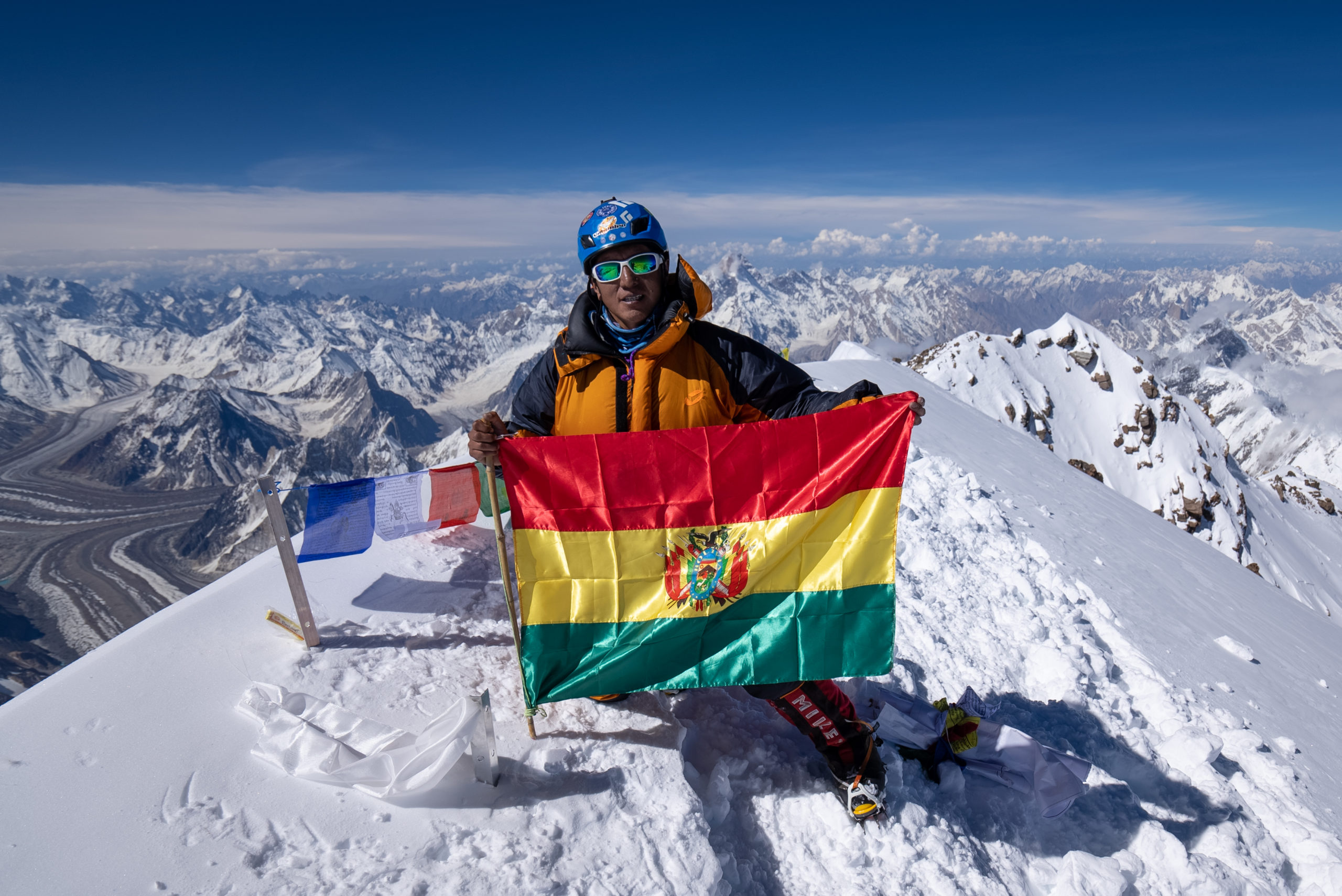
The dream is becoming true and a feat is entering the Himalaya history
The Thaki Team arrived to the summit of K2 (8611m alt.) on the 28.07.21 without oxygen, nor logistical support. 10 days after the Broad Peak (8047 m alt.)

An expert and passionate on-site agency with almost 10 years of experience.

Quality services selected with the most care

A safe trip with SOS MAM

Responsible and sustainable tourism
Get in touch
- Destinations
- Travel Styles
- Customer Reviews
- What are the 10 Best Bolivia Travel Agencies & Tour Companies in 2024?
What are the 10 Best Bolivia Travel Agencies & Tour Companies in 2024?
Explore Bolivia's diverse landscapes and fulfill your travel dreams with these top 10 Bolivia travel agencies and tour companies. From navigating the expansive salt flats in a 4x4 to trekking the remote Illampu Circuit or swimming with pink river dolphins in the Bolivian Amazon, Bolivia offers a wealth of unforgettable experiences.
Amidst the multitude of Bolivian travel agencies, these stand out for their comprehensive Bolivia package tours, personalized services, local offices nationwide, extensive industry experience, and dedication to sustainable practices.
#10 Perla de Bolivia
Perla de Bolivia operates offices in Uyuni and La Paz, specializing in both group and private tours across Bolivia. Their itineraries vary from full-day adventures to comprehensive five-day tours, covering destinations like Uyuni, San Pedro, Sajama, and the Death Road. For a romantic experience, consider their stargazing or sunrise tours in Uyuni. Perla de Bolivia prioritizes convenience with the option to book tours via WhatsApp, ensuring accessibility for travelers with busy schedules or those unable to visit their offices in person.
#9 Thaki Travel
Thaki Travel, a leading Bolivia travel agency based in La Paz, specializes in adventure tourism with a particular expertise in mountain climbing. Founded by two friends enamored with Bolivia's culture and people, Thaki Travel designs tailor-made trips across the country. Their diverse offerings range from day-long excursions such as the natural dyeing workshop in El Alto to extended climbing tours spanning over 20 days. Explore their "Travel Ideas" page, categorizing tours into treks, mountain expeditions, responsible tourism initiatives, and luxury experiences, providing options to suit every traveler's preferences and interests.
#8 Banjo Tours
Banjo Tours stands out for its dedication to unveiling Bolivia's lesser-known treasures beyond the typical tourist spots. Run by a small yet experienced team, this tour operator crafts unique itineraries tailored to various interests such as active adventures, nature exploration, wildlife encounters, and cultural immersion. They also offer budget-friendly options for travelers on longer journeys. In addition to showcasing Bolivia's diverse landscapes and cultures, Banjo Tours is committed to community empowerment by providing English language education to locals in rural Bolivia.
#7 Hi Bolivia!
Founded by Beatriz Villegas, Hi Bolivia! is based in La Paz and offers a wealth of tailor-made tours for both groups and individuals. Their home page showcases seven different trip options that range from nine to 22 days in length as an example of the types of trips they design. Whether you’re after a day tour or a multi-day adventure, this tour company designs itineraries tailored to your interests, whether that be adventure, ecotourism or more. They’re committed to offering competitive prices and sustainable tours by working directly with the local communities.
#6 Intense Bolivia
Intense Bolivia comprises a team of seasoned local experts who possess extensive travel experience within Bolivia and abroad. This unique perspective enables them to provide intuitive customer service that meets the diverse needs and comforts travelers seek. Their tour offerings cater to a variety of interests, from day trips to Lake Titicaca to thrilling three-day adventures in Madidi National Park. True to their name, Intense Bolivia also features a one-day mountain biking excursion along the infamous Death Road, promising an exhilarating experience.
#5 Ruta Verde
Founded by a passionate Dutch-Bolivian couple, this tour company in Bolivia operates out of Santa Cruz de la Sierra and caters to travelers in English, Dutch, and Spanish. Specializing in nature, adventure, and cultural tours, they offer a diverse range of experiences. Explore the rainforests and swamps of Noel Kempff Mercado National Park, embark on a catamaran cruise across the deep blue waters of Lake Titicaca to Isla del Sol, or visit a Mennonite colony to immerse yourself in the lifestyle of one of Bolivia’s unique ethnic groups.
#4 Bolivia Travel Site
This Bolivia tour company offers a wide array of itineraries, from day trips to multi-day tours spanning the country's diverse landscapes. In addition to well-known destinations like La Paz and Santa Cruz, they provide extensive options for private and shared tours to places such as Torotoro, Oruro, and Villa Tunari. Popular tours include the Condoriri Trek, stargazing in Uyuni, and visits to the Huatajata community. For those seeking unique experiences beyond the usual offerings, Bolivia Travel Site excels in customizing existing tours or creating bespoke itineraries tailored to individual preferences and interests.
#3 Late Bolivia
Based in La Paz, Late Bolivia is committed to showcasing Bolivia's diverse landscapes and fostering connections with local communities through meticulously crafted tours. Their repertoire includes day tours such as exploring La Paz city and visiting Sajama National Park to experience hot springs and spot Andean flamingos. Primarily catering to adventure enthusiasts, they offer extensive opportunities for trekking, climbing, and mountain biking. For an immersive cultural experience, consider joining their tours during festivals like Carnival in Oruro or Gran Poder in La Paz. Late Bolivia ensures unforgettable journeys that blend exploration with authentic local encounters.
#2 Strawberry Travel
Based in La Paz with additional offices in Uyuni and Puno, this tour operator excels in crafting customized and organized tours throughout Bolivia. They cover diverse destinations such as Oruro, the mining city of Potosi, and Santa Cruz. Their offerings span from comprehensive single-day city tours to extended multi-day programs. Choose their "Bolivia at a Glance" tour for a concise four-day exploration of the country's key highlights. For a more leisurely journey, opt for "Bolivia Ideal," a seven-day itinerary from La Paz to Uyuni and Colchani, designed to immerse travelers in Bolivia's rich culture and landscapes.
#1 Latin Discoveries
Latin Discoveries offers a diverse range of Bolivia tours, from comprehensive 10-day explorations covering highlights like La Paz, Uyuni's salt flats, and Tiwanaku archaeological site, to specialized trips in Sajama National Park or Madidi. With over 20 tours available, travelers can tailor their experience based on interests such as honeymooning, family vacations, or outdoor adventures. Customization options abound with Latin Discoveries' local Bolivia Travel Experts in La Paz, ensuring each itinerary suits individual preferences. With more than two decades specializing in South American tours, Latin Discoveries provides responsive 24/7 on-the-ground support. Adventurous souls can even extend their journey by combining Bolivia with visits to five neighboring countries. Moreover, Latin Discoveries contributes 1% of their earnings to NGO Nature and Culture International, championing conservation efforts across South America—an impactful way to contribute while exploring the region's natural wonders.
Take the stress out of trip planning with one of these top 10 Bolivia travel agencies. Whether you're embarking on a honeymoon or a solo adventure, their knowledgeable and professional travel experts will handle all the details to ensure you embark on an unforgettable journey. Contact a Bolivia Travel Specialist today to start planning your next adventure hassle-free.
GET IN TOUCH - CLICK HERE
How to Climb Huayna Potosi in Bolivia: The Complete Beginners Guide
I was hesitant about taking on Huyana Potosi. I wasn’t sure if I wanted to spend the money, and I wasn’t sure I was up to the challenge. I am so glad I did. Conquering Huyana Potosi remains one of my favorite travel experiences! I summited without mountaineering experience and found it a challenging yet achievable and exhilarating adventure. Here’s everything you need to know before you go .
Helpful Resources We Trust and Use
Accommodation – Booking.com Transport – Bookaway Car Rental – Discover Cars Travel Insurance – World Nomads / SafetyWing Global Health Insurance – SafetyWing Experiences – Get Your Guide Online Protection – NordVPN
Every year, thousands of tourists summit Huayna Potosi, which has become a major drawcard for adventurers and mountain enthusiasts traveling to La Paz, Bolivia.
Reaching 6,088 meters above snow level, the snow-capped peak of this Andean Giant can be seen beckoning in the distance from Bolivia’s capital, La Paz.
The base camp sits at 4,700 meters and importantly, can be reached by car, a short drive from the sprawling capital city. The accessibility of the mountain, combined with a relatively non-technical route to the summit, means Huayna Potosi is considered an ‘entry level’ 6000+ meter mountain. While the mountain should not be underestimated or taken lightly, three-day tours have a high success rate of summiting even novice climbers. Of course as with all high altitude mountaineering, altitude sickness, weather, and sheer exhaustion are always a risk at these heights.
Pre -Book Your Huyana Potosi Adventure With Get Your Guide
A popular activity for adventurous visitors, a number of agencies offer guided climbs to uninitiated climbers. The three-day guided Huayna Potosi climb starts off gently, allowing plenty of time to get used to the gear and acclimatize before the grueling task of summiting the mountain begins just after midnight on the final day.
“ As we neared the bottom of the glacial peak of the mountain and the incline started to flatten off, both our guides began to urge us to start running or at least flat-footedly jog in our crampons down and off the glacier. “ Skip Ahead to the Play by Play
This Huayna Potosi blog post will outline some of the most frequent questions you might want to know before you set out to climb Huayna Potosi. It also includes an example itinerary , based on my personal experience, so you know exactly what to expect on a Huayna Potosi climbing tour.
Where is Huayna Potosi?
Huayna Potosi is one of a handful of peaks that reaches over 6000 meters in the Cordillera Real. The Cordillera Real is a mountain range in eastern Bolivia and a sub-range of the Andes.
The closest mountain to the city of La Paz, Huayna Potosi, is a bumpy and winding forty-kilometer drive north of Bolivia’s capital.
Top Accommodation Options in La Paz
Hostal Iskanwaya $ Patio de Piedra Hotel Boutique $$ Stannum Boutique Hotel & Spa $$$
How to Book a Huayna Potosi Climbing Tour
Booking in person once you get to La Paz is the best way to book your Huayna Potosi climbing tour . Prices online are at least $100 USD more than prices we were quoted face to face.
All Transport Tours in the tourist district of La Paz is a reputable company with experienced and expert guides. However, some online reviewers have had negative experiences we recommend shopping around in La Paz, reading online reviews and finding out who is offering the best deal.
Tours (should) include transport from the office to the base camp. Three days guided tour (1 guide for every 2 climbers), all meals, and all gear including outer hiking clothing and polar fleece. They should also have other bits and pieces available for hire if you didn’t travel with hiking gear (trekking shoes, sleeping bags, headlamps, etc.)
How Much Does it Cost to Climb Huayna Potosi?
In 2018, we paid one thousand Bolivianos, which was about $140 USD at the time. At the last update, online prices were up to around $230 USD, but again, better deals may be available face-to-face.
If you are interested in pre-booking your climb, check out these offers from Get Your Guide:
Where to Stay Pre and Post-Climb in La Paz
One thing I would really recommend is having a comfortable hotel or hostel to rest in both before and after the climb.
If you don’t sleep well in the lead-up to your climb, you gonna have a bad time. Similarly, having a comfy bed was an absolute godsend when I got back from Huyana Potosi.
Luckily, in La Paz you don’t have to break the bank to find great accommodation. Here are our top recommendations.
Hostal Iskanwaya
Affordable and comfortable Hostal Iskanwaya has private rooms starting from $30 USD a night. Well worth it for clean and spacious accommodations right in the heart of central La Paz
Hotel Sagarnaga
If you want to step it up a little into something a bit more modern Sagarnaga Hotel has nice rooms and a hotel experience at an affordable price point at $60 USD per night.
Patio de Piedra Hotel Boutique
The cozy and historic Patio de Piedra is only 5 minutes walk from the center and offers well appointed and comforatble rooms from around $80 USD per night.
Hotel Presidente
Treat yourself a little. With plenty of onsite facilities including a heated pool and onsite spa, the Hotel Presidente is perfect to recharge after a challenging hike.
Stannum Boutique Hotel & Spa
Views of the mountains surrounding La Paz from the well appointed suites in the Stannum Boutique are sure to get you in the right frame of mind to take on Huayana Potosi, or reflect on a successful summit.
What to Pack to Climb Huayna Potosi
You will need:
- A sleeping bag
- Trekking shoes
- Sunglasses or goggles
- Thermal Underwear
- Polar Fleece Jacket
- Remember to bring a good book or Kindle , plus a phone pre-loaded with some podcasts, movies, or games. There is a surprising amount of downtime.
- Power Bank for Charging your Phone – We use and recommend Anker
- Coca leaves, sold at any market in Bolivia, are a great stimulant to help push through the challenging hike. Chew on some leaves when you need an extra boost. For a real kick, you can chew together with some bi-carb soda.
Considering Renting a Car in Bolivia?
🚗 Check out DiscoverCars to search, compare, and save up to 70% on car rentals! 🚗
Is Climbing Huayna Potosi Dangerous?
There is an inherent danger when climbing to the altitudes you will need to ascend to reach the Huayna Potosi Summit. Unpredictable weather, avalanches, sheer cliffs, and dangerous ice climbing are all part of this high-altitude climb.
The key to making the Huayna Potosi climb as safe as possible is to go with an experienced guide. Guides who have spent a lot of time on the mountain understand the route, the weather, and the risks.
By way of example, during my own climb, after the weather turned on our climbing party during our descent from the summit of Huayna Potosi, our guide was urgently herding us quickly down the summit. At the time it was frustrating not being given time to rest or catch our breath. However, once we got off the steep section of the summit, our guide revealed that the fresh snow at the top of the mountain was loose and the chance of an avalanche was rising as the early morning sun hit the mountain. Having a guide who is not only familiar with the mountain but also able to manage inexperienced climbers is essential!
Feel out the different tour companies, read reviews, trust your gut, and don’t necessarily go for the cheapest tour; paying for quality, experienced guides is money well spent.
You might also want to look into your travel insurance, as almost all basic policies exclude mountaineering, while many “adventure sports” or hiking-specific policies exclude hiking above 6,000 meters elevation. Additional policies might be required. Full disclosure: I just risked it, but in hindsight, that may not have been the wisest idea.
Travel Insurance is Always a Good Idea
But doubly so when you’re planning adventure sports. We use and trust SafetyWing Nomad insurance to provide us with affordable, flexible coverage wherever we go! An adventure add-on is available for mountaineering adventures UNDER 6,000 meters altitude.
IS Huayna Potosi Difficult?
There are no two ways about it; summiting Huayna Potosi is tough, really tough. But for people who are fit and active and who have done multi-day hikes or long day hikes before, there is no reason why you shouldn’t be able to conquer this behemoth.
Huayna Potosi has developed a reputation as an ‘entry level’ or ‘beginner’ high-altitude climb. The route to the summit is not as technical as other high-altitude climbs and can be completed by novice climbers who have had the ice pick and crampon training included with the guided climb.
That being said the Huayna Potosi climb should not be underestimated. The first two days of the tour are relatively easy. Day one of the Huayna Potosi guided tour is spent at base camp practicing scaling an ice wall with picks and crampons in preparation to navigate the glacier you will need to climb to reach the top. The second day is spent acclimatizing and hiking for about two hours up to the high camp refugio. It is a steep ascent, but short and sweet.
Summiting the mountain on day three is a truly challenging experience. Starting just after midnight, you must reach the top before the first light to mitigate the risk of avalanches as the snow begins to melt in the morning sun. Tethered to your climbing party, marching through the dark night up and up through snowdrifts as bitterly cold winds whip icy sleet into any exposed skin. An ice wall must be scaled, and the mountain will become steeper and steeper as you approach the summit. Battling inclement weather, altitude, and a gruelingly steep final ascent, the mountain will test even the fittest hikers and casual climbers.
To give yourself the best chance of summiting, pick your guide carefully. Consider the best time to hike Huyana Potosi (more on this below). Acclimatize in La Paz for a few days before your hike. Do a three-day / two-night tour rather than a two-day / one-night hike. Consider hiring a porter to help transfer your heavy, crampon-laden pack from base camp to high camp on day two to help conserve energy for the summit.
Is There Any Mobile Service or Network Coverage on Huayna Potosi?
Zip. Nada. Nothing.
Unsurprisingly there is no mobile or wifi connection on Huayna Potosi (there isn’t even electricity).
* This was true when I hiked in 2018, please let me know in the comments if this has changed!
🛌 Looking for accommodation? Get the best deal on your favorite platform
When to Hike Huyana Potosi?
While climbing is done year-round on Huyana Potosi, the dry season between May and November is highly recommended for beginners taking a guided climb. During the wet season, there is a far greater chance of wind and snow, making the climb particularly unpleasant, preventing your summit or closing the route entirely.
What’s the Food Like On a Huayana Potosi Guided Climb?
While the food might vary a little between tour companies, in general, there is a house cook at base camp, and your guides cook at high camp. It is not exactly a gourmet experience. The meals we were served were basic and oily. I had stomach issues on the second day.
Lunches at base camp were rice served with oily fried meat. Breakfast at base camp was fried bread with spreads, some bananas and plenty of cookies, teas, coffees and chocolate drink.
Our dinner, the first night at base camp consisted of rice soup, bread rolls and pasta. Our dinner at high camp was simply soup and fried bread.
Snacks were sweet biscuits (cookies) and packaged pastrys as well as hot drinks like coffee and tea.
What’s The Accommodation Like on Huyana Potosi
Much like the food situation, you are here to climb, not to enjoy luxurious accommodation. The camps are basic. The bedding is old. But as long as your sleeping bag is warm, you should be comfotable.
What to Expect Climbing Huayna Potosi: My Three-Day Guided Huayna Potosi Itinerary
8:30 am The day begins at the tour agency to get fitted for gear. The gear was well-worn but well-maintained and in working condition.
9:30 am Piling into a collectivo (mini bus) it’s off toward the mountain. The drive up and out of La Paz is slow but takes you through parts of La Paz you might not get to see hanging around Sagarnaga Street. The drive out is also a great opportunity to get to know your Huayna Potosi Guide and any other climbers you will be making the ascent with. The agency I climbed with, All Transport Tours provides one Huayna Potosi guide for every two climbers. Another solo climber, also an Australian, Max, had booked the same trip and would be making the ascent with me and our guide Jimmy.
11:30 am Arrive at Huayna Potosi Base Camp. The simple accommodation consists of a kitchen, dining room, bedroom for guides, and bedroom for climbers.
12:00 pm A lunch of thin mystery meat breaded and fried was served atop a heaping of rice and two slices of tomatoes for lunch. It’s basic but has plenty of food. Coca tea, coffee, and chocolate powder are good ways to get some liquids into your body and, importantly, stay hydrated at altitude.
1:00 pm After lunch settled, we hiked up and out of base camp for about 45 minutes to reach a large glacier. Here we got a chance to practice walking with crampons on, (pretty straightforward) and using ice axes and crampons to scale a small ice wall. The training lasted for about an hour but made for a nice afternoon in the mountains and a few good pics for the album. Once everyone had had a crack at the ice wall, it was back down to base camp.
3:00 pm With three or four hours to go before dinner, we had some free time. I hadn’t anticipated the downtime and was regretting not downloading some movies or podcasts onto my phone. I made do reading and writing.
6.30 pm Dinner time – we are served a big bowl of rice soup and a couple of bread rolls. Still a little hungry after my soup and unsure of whether this was a starter or the main course I went to investigate. The kitchen was dark, ‘guess that’s the lot’ I thought. I knocked on the adjoining bedroom. The woman who kept the refugio, bustled out, ‘Mas?’ I enquired hopefully, and she refilled my bowl. After a second bowl of soup, I was full to the brim. That’s when Jimmy our guide returned to the room with a huge plate of pasta and meat sauce.
7:30 pm After finishing my plate of pasta I rolled into the bed and tried to fall asleep. I was eager to fall asleep as soon as possible and wake up early to get in a good rhythm in preparation for our midnight start on day three.
5.30 am The room in the rufugio was cold and the old mattress sagged, but the sleeping bag I had rented from the tour agency was warm and I slept through, thankfully not affected by the altitude. Waking up, I was aware that we had a long morning of doing not much ahead of us before we headed up to high camp in the afternoon. After reading and writing for a couple of hours it was time for breakfast.
8:30 am Breakfast was simple. Bread, butter, jam, a couple of bananas, cookies, and plenty of hot water for drinks. My hiking mate, Max, and I took our time, stretching out breakfast with two coffees and three or four teas. By the time we were done, it was time to start packing.
11:00 am Crampons and the boots to fit them, sleeping bags, ice ax, warm clothes, and water were chucked into large packs to carry up to the high camp in the afternoon.
12:00pm Lunch, was, again, very simple, pan-fried chicken (dripping in oil) and rice. During lunch, a group of three climbers arrived at the base camp having summited that morning. They were exhausted and regaled us with the horror stories of their five-hour struggle that morning. By the time we had finished eating, we were starting to regret embarking on this adventure.
1:00 pm After lunch another climber, Lucas, a young Italian bloke, who had been hiking the area for two days reached the base camp. He and his guide Gonzales were to accompany Max, Jimmy, and I to the high camp and the Huayna Potosi summit the next day.
2:00 pm We set off to high camp. The hike to high camp only takes a couple of hours but rises quickly and requires a degree of fitness. Carrying the gear needed to summit adds another challenge.
Unfortunately, my recent indulgence in local cooking did not agree with me, and 15 minutes into the hike I began to feel ill, suffering cramps, stomach pains, and bloating. After another 30 minutes, we reached a small refugio, to my great relief there was a rudimentary outdoor stone toilet. I prayed that this would be the extent of my stomach problems. The short hike had been hellish and summiting would be extremely challenging if my stomach problems persisted. After relieving myself it was onward and upward.
4:00 pm We arrived at the high camp. The refugio has a bunk room that can sleep 20 in high season although it would be extremely tight. Thankfully it was just Max, Lucas, and I sharing the room tonight. A second and third building serves as a kitchen and guide accommodation. The refugio accommodation has an opaque plastic roof that had warmed during the day despite the cold wind outside. Again the mattresses were old and sagging. We were brought tea, coffee, and coca mate, along with crackers and some pastry. After a snack, I laid down with a book to rest but didn’t manage to dose off.
6:00 pm Dinner was brought out by our guide. A bowl of watery noodle soup was served with pieces of bread fried in oil. It was fine but not flash. I had learned my lesson the night before so I didn’t request a second helping of the first course. Turns out this time this was the only course.
7:00 pm I stretched down in my bed and read my book to fall asleep. I was wary that sleeping at altitude could be problematic and the party we had met descending earlier had said they barely slept at all. Thankfully this wasn’t an issue for me and after 20 minutes of reading, I dozed off into a comfortable sleep.
10:00 pm I woke up needing to go to the bathroom. I fumbled for my boots in the dark and pulled them on hobbling outside in my long johns and a t-shirt. The air was cold but the wind had dropped away. The sky was cloudless the moonlight bounced off the snowy mountains surrounding us. The Milky Way stretched out in every direction above before disappearing behind the hulking shadowy peaks looming up on every side.
Day Three: The Climb
12:30 am I woke just before my alarm, alert and excited. I felt prepared and my stomach issues hadn’t come back. Over the next ten minutes, the other’s alarms fired up and we slowly pulled ourselves out of sleeping bags and into warm underclothes.
1:00 am Breakfast was simple, bread, margarine, some more pastry, hot water for coffee, and teas.
1:30 am I prepared myself mentally as I was rugging up in long johns, hiking pants, and snow pants over two pairs of socks, undershirt, sweater, fleece, and parka on top. We were given balaclavas, but the conditions didn’t require them…yet. Under gloves went beneath warm snow gloves. A beanie under the safety helmets.
Crampons and ice axes strapped up to a small pack with extra-warm, gear, snacks, water, and a plastic bag full of coca leaves for energy. Bundled up we stumbled out into the dark and cold. Clouds had settled back over the mountain and the stars could no longer be seen. I shoved some coca leaves in my mouth some headphones in my ears and off we hiked into the snowy night.
Summiting Huayna Potosi
1:50 am After navigating out of camp for ten or twenty minutes, the trail became icy and we stopped to attach crampons and tether ourselves to our guides and one another.
2:30 am Trudging steadily up through fresh snow for 40 minutes or so, we stopped for a moment to sip some water and catch our breath. Our guides were keen for us not to idle too long in the freezing cold. After a few minutes, we were off again. And so it is for the next hour. Trudging up, and up and up.
3:30 am We came to an ice wall which, while not quite vertical, needs to be scaled with axes. As we slowly inched ourselves up, the wall stretched on for seemingly hundreds and hundreds of meters. We finally pulled ourselves back onto more even ground. I glanced back at our mammoth accomplishment, in actuality, the glacier could not be more than 50 meters.
On we hiked in the darkness. From time to time the clouds cleared either behind us or in front, allowing us glimpses of the spectacular Andes below us, La Paz glittering in the distance, or the intimidating peak in front.
The hike is grueling and the effects of altitude compounded as our energy began to wane and the temperature and thin air began to take their toll on us.
4:30 am As we got closer to the Huayna Potosi summit the clouds closed in around us and the wind picked up. Exposed skin stung as icy sleet whips our face.
Our pace slowed as the incline gradually increases. Mental goals, previously focused on 40-minute water breaks, and later 10-minute breathing breaks were reduced to simply walking ten steps.
5:00 am We reached our final rest stop before the summit. The last 150-meter ascent to the summit is a sheer 45-degree mountain face with nothing but packed snow and ice to pick your way up. There can be no stopping as the threat of avalanches is serious on this part of the mountain.
We slowly zig-zagged our way up. Kicking crampons hard into the snow and leaning heavily on the ice axes. Step by step we hauled ourselves slowly up, drawing ragged breath. Concentrating only on putting one foot in front of the other, a task that somehow absorbed all my concentration and will.
Eventually, we reached the razor-edged mountain ridge that leads to the Huayna Potosi summit.
Dawn was just beginning to break as our guides announced we had reached the summit. Though if they were telling porkies we would have no way of knowing in the dark and snow. After resting for a few minutes enough grey light filtered through the cloud that we could take pictures, though the white-out all around us obscured what would probably be a spectacular view.
None of us seemed to mind that we couldn’t see the view. We were all just chuffed to have reached the summit. Chuffed we didn’t need to climb up any further.
6:30 am After a rest and a bit of a photo shoot it was time to start heading back down before we froze to death.
The return trip down the steep glacial face of the summit was tricky. At least an extra foot of snow had amassed on the steep glacier since we climbed up. We carefully picked our way down but the guides were urging us on, quicker and quicker. At one point I stop to draw breath. ‘Keep moving!’ comes the curt order from our guide Gonzales.
At one stage I sidestepped my lower foot down the mountain. My boot failed to find hard ice. Slipping, I found myself suddenly sliding down the sheer glacier. It was my ‘Vertical Limit’ moment. Thankfully I was able to swing my ax into the snow and ice and stop my slide before my safety line went taught and I pulled down Gonzales with me. I clawed myself back onto my feet, panting heavily, my jacket full of ice. On the plus side, I am closer to the bottom of the glacier.
As we neared the bottom of the glacial peak of the mountain and the incline started to flatten off, both our guides began to urge us to start running or at least flat-footedly jog in our crampons down and off the glacier.
Finally, the steep ice gave way to a plateau. We were allowed to take a break. Gonzales admitted that with the extra snow that had fallen between us summiting and beginning our descent, he was worried about the heightened risk of an avalanche on the glacier and hadn’t wanted to wait around. We breathed a collective sigh of relief, pleased that, a) he got us out of the danger zone and b) that he did so without panicking us too much.
We made our back down the mountain. As we descended the snow eased and the clouds cleared a little.
8:30 am Back at high camp we took the opportunity to drink warm tea, eat chocolates and pastries and chew on some coca leaves. We were conscious not to rest here too long, lest we seize up. We still had to descend to base camp.
9:00 am After a short break, and repacking our sleeping bags, crampons, and climbing gear into our large packs we began the final descent.
11:00 am We were back at base camp. We awaited our transport back to La Paz knowing full well, that, like everything else in La Paz it would be completely hit or miss whether it would be very early, or very late. In the meantime, it was our turn to regale arriving hikers with tales of our adventure.
12:00 pm Shockingly the transport back was just about on time. I was tired enough that I somehow dozed the entire trip back despite the mini-van bouncing around the awful Bolivian roads.
The Aftermath
Back in La Paz, Kelli was waiting at our accommodation for me with some lunch. I ate and passed out for the rest of the afternoon. Waking up around 6:00 p.m., I was starving. Surprisingly, I felt energetic, and we headed out to one of the best meals we ate in La Paz, Mi Chola .
The fallout was fairly minimal. I had some soreness, but overall, I wasn’t as knocked around as I thought I might be.
The climb was certainly one of the greatest adventures of this trip and a great introduction to high-altitude climbing. That being said, it should not be undertaken lightly. I would recommend the climb for people with some multi-day hiking experience and a good level of fitness.
The benefits of climbing at altitude are far-reaching and long-lasting. Your body just becomes so much more efficient after spending time at altitude, particularly if you are active. This effect seems to last long after I have descended from elevation.
Hopefully, I’ve answered some of your questions about climbing Huyana Potosi, but if not, leave a comment below, and I’ll do my best. Happy climbing!
In 2016, I had been dumped by my girlfriend, fired from my job, and the lease on my house was running out. Facing moving back in with my parents, 26, jobless and alone I decided to listen to the message the universe was trying to send me. I took off on my first solo backpacking trip, with a one-way ticket to Bangkok and a well-thumbed Lonely Planet guide. From there I wandered Southeast and Central Asia, traveled the Great Steppe, and made my way across Russia and throughout Europe.
In Estonia I met Kelli, who, despite having a less frantic travel style, shared my my restless spirit and passion for exploration. Together, we embarked on a new journey, van life. Over four years we travelled across three different continents with three different vans.
In 2022, as the world began to re-open post COVID we took an opportunity to realise a long held dream, to live aboard a sailboat. Since then we have spent two summers in the Mediterranean, sailing and living aboard our little sail boat Whisper. When we aren't sailing we continue to live our nomadic lifestyle, guided by a philosophy of slow travel and self directed adventure be it by van or backpacking.
We find excitement through our journey into the unknown, stillness and content in the beauty of the places we discover and we find ourselves in the vastness of our world.
Hopefully, we can help you find what you're looking for too. Get lost with us and find your own path.
Leave a Reply Cancel reply
Your email address will not be published. Required fields are marked *
One Comment
- Pingback: Forging a Path Ahead- Climbing Through the Huayna Potosi – Vani's View Point

Book Easy! Great adventure! Personalized Tours! Punctuality! Friendly service! Great adventure!

Salar de Uyuni

Huayna Potosí

Pico Austria
to SouthTreks, your premier choice for exploring the wonders of Bolivia!
As a top Tour Operator & Travel Agency, we specialize in unforgettable destinations as the mesmerizing Salar de Uyuni, the towering Huayna Potosi, the picturesque Copacabana, the stunning Charquini, the challenging Choro Trail, the hidden gem of Sorata, the bustling city of La Paz, and many more in Bolivia.
Contact us Easily!
Most popular tours.

Highlight Tours, in Bolivia!
Welcome to SouthTreks, your premier tour operator and travel agency in Bolivia. We offer customized trips to the most breathtaking destinations in the country.

Palca Canyon

Your trip is our passion

Bolivia's majestic peaks await your ascent!
Are you ready for an adventure of a lifetime? Join us on an unforgettable ice climbing experience in Bolivia’s stunning Andes mountains. Our expert guides will take you on a thrilling journey to the heart of the Cordillera Real, where you’ll have the chance to conquer glaciers and ice walls like never before.

Easy Payment with

- Traveler’s Choice
- Salar de Uyuni All Tours
Payment Methods
Change language.
- Want Booking or info? ⦿ (+591) 71970444 ⦿ [email protected]
- We are Here on Map! ⦿ La Paz - Sagarnaga #308
Huayna Potosí 6.088m
- trekking -, copacabana & sun island, start in uyuni city, - salar de uyuni -, start in uyuni, start in san pedro, - contact -.

- Trip Reports
- Areas & Ranges
- Huts & Campgrounds
- Logistical Centers
- Fact Sheets
- Custom Objects
- Plans & Partners
- Pequeño Alpamayo (Condoriri Group)

- Additional Parents
- Images (112)
- Climber's Log Entries (67)
- Comments (4)
- Additions & Corrections (5 )
The Pequeño Alpamayo, or Little Alpamayo is another of the fantastic mountains located at the Condoriri Group in La Coordillera Blanca in Bolivia. It is a pyramid of snow, with the standard route being about 55 degrees, snow, nice in the morning, but sticky later in the day. It was first climbed in August 1962 by South Africans Irene and Keith Whitelock.
- Getting There
This is the general approach to the Condoriri Group. You can also check the mountain Cabeza de Condor page, which is located in the same area. You can arrange several types of transportation to get to this region, first from La Paz to the Tuni Area, and later to the base camp next to the lake Chiar Khota. a) Hire private van or 4x4 in La Paz, and get to an aqueduct system called Tuni, in about 2-3 hours. The price in 2001 was about $80.oo and you may get a good deal depending on how good you are to bargain. I made friends with the drivers and local guides, and often got several persons to fill a mini-van so I got kind of cheap deals for me. Go and try! b) Ask and see if you can share the transportation with a guided trip. It never hurts to ask around (it worked for me) If you want you may want to share your expenses with other climbers. You will find them everywhere, but you can also hang out in the Hotel Torino, downtown La Paz, and try to find other climbers looking in going to the Condoriri Massif. The hotels have billboards where climber can placve adds. Another good place to hang out and meet climbers, used to be the Restaurant MONGOS. Check your guidebook. You can hire mules from different places around the lake. The small town of Tuni and the place call Plaza de Mulas (Mule Square) are just some of them. Farmers, arrieros (mule caretakers) and peasants will be glad to carry your gear for a modest fee. After you get to the Aqueduct and reservoir systems, you have to walk some good 3 hrs, on a dirt road and an straight forward hike. You will reach the Chiar Khota (4600 mts) Lake and finally the base camp. Here water, stone toilets and guards are available to you, but is not a resort, is the wild, so bring your garbage bags to pick up your trash.
- Permits, Maps and Guidebooks
No permits were necessary when I went there (Summer 2000) Maps? Scale 1:50.000 are the ones you will find. Try Instituto Geografico Militar (IGM) sheets , four of them, to cover the whole massif: 5945 I (Zongo), 5945II (Milluni), 5945 III (Peñas), and the 5945 VI (Khara Khota). Be careful with this IGM sheet since there are reports that they have errors.....There are other maps especially German maps. You will have to research about them, but many climbing stores and guiding services sell the maps in La Paz. However, in my experience, 1:50.000 helps but is not a very detail scale…. Guidebooks: Bolivia, a Climbing Guide, from Yossi Brain (The Mountaineers) is very good. You can buy it online or in Bolivia. also, another guidebook is: La Cordillera Real de los Andes-Bolivia, by Alain Mesili (www.andes-mesili.com), comes in English under he title "Andes of Bolivia" Food: I hire food from the locals, so I did not mind, but I have a South American stomach and I can eat a garbage truck and not likely get sick. Anyway, the way to go is on the markets in La Paz, where you can buy a bunch of things from milk to spaghetti, cookies and chocolates. You will likely stay downtown La Paz while you acclimatize, and plenty of “mercados” are there for you. You can also buy Propane-Butane mix and white gas. You can re-sell these unused cylinders before you leave (and indeed all of your gear)
- When To Climb
The season in the Central-Tropical Andes is mostly from June to August, when the dry winter makes the condition best. August is packed with climbers, prices are higher so maybe you want to get there early in the season. Bolivia is south of the Ecuador Line and is in the Tropics still. Some resources for non-mountaineering friendly weather: Bolivia.com . Khainata . Weather Underground .
There is a very good camping area near the Chiar Khota (4600 mts) Lake. You can also camp in the mountains at your own risk, of course. Remember: "Climb high, sleep low"
- Miscellaneous Info
More Information about Bolivia: The CIA World Fact Book The US Library of Congress Enigma: Below, these three pictures show all the Pequeno Alpamayo. They were conributed by Mathias Zehring . The one on the right was provided by Mathias Zehring. The second was taken by the German photographer Jürgen Winkler (recently published again in the book "Bergfotografie" with other great photographers Mathis, Ritschel and Zak), with description "Condoriri group". The last one is nothing but what the mind of marketers call Everest, in the IMAX movie about Mount Everest ! But in reality is the Pequeño Alpamayo! Be careful, things in the TV and in the movies are not what we see.....reality is manipulation of images...
- External Links
- Climbing Pequeno Alpamayo (w/photos) - Bolivia
- Bolivia Adventure Planet Expeditions A travel agency that works in Bolivian's moutina ranges, Aconcagua and Patagonia. Offers guides, expeditions and logistic support.
- Bolivian Journeys Bolivia climbing specialists based in La Paz, expeditions and logistics throughout the bolivian Andes. www.bolivianjourneys.org mail:[email protected]
Additions and Corrections Post an Addition or Correction

Haliku - Jun 11, 2008 9:13 pm - Hasn't voted
Hi, I just returned from Bolivia. Using Bolivian Mountains roundtrip transport to the village above Tuni cost $140. Cheers, Haliku

OceansInferno1181 - Jul 27, 2010 3:17 pm - Hasn't voted
If you shop around La Paz, there are many travel agencies that can do the transport via a Taxi to Tuni for anywhere between $25 and $30 each way...shouldn´t have to pay more than $60 (about 420 Bolivianos) for a round trip

richardpattison - Jul 29, 2014 2:34 pm - Hasn't voted
You can watch a 5 minute video here: https://www.youtube.com/watch?v=Gkl-ilU8cdg

attimount - Apr 2, 2018 7:57 pm - Hasn't voted
Richard, watched them all, really useful and well made. Thanks for posting them.

Hegyibarom - Oct 13, 2016 8:40 am - Hasn't voted
Video from the standard route (and Pico Austria): https://www.youtube.com/watch?v=D2NfGxHPDaQ
View Pequeño Alpamayo (Condoriri Group) Image Gallery - 112 Images
- Additions & Corrections
- Nearby Mountains & Rocks
- Interactive Map
- Mountains & Rocks in Bolivia
Children refers to the set of objects that logically fall under a given object. For example, the Aconcagua mountain page is a child of the 'Aconcagua Group' and the 'Seven Summits.' The Aconcagua mountain itself has many routes, photos, and trip reports as children.
- Normal Route: West-Southwest Ridge
- Direct Route
- Bolivian Andes Expedition 2010
- An Expedition in the Bolivian Andes
- Culture and Climbing in Bolivia
- Pequeño Alpamayo: my first alpine climb in South America
Parents refers to a larger category under which an object falls. For example, theAconcagua mountain page has the 'Aconcagua Group' and the 'Seven Summits' asparents and is a parent itself to many routes, photos, and Trip Reports.
- Ancohuma (Jankhouma, Janq'uma)
- Huayna Potosi
- Chachacomani / Chachakumani
- Cabeza de Condor (Condoriri Group)
- Ala Izquierda
- Charquini (Ch'iyar Qurini)
- Tarija Peak
- Austria Peak
- Wila Llojeta
- Piramide Blanca
You need to login in order to vote!
Don't have an account.
- Rating available
- Suggested routes for you
- People who climb the same things as you
- Comments Available
- Create Albums
- TripAdvisor

DEATH ROAD BOLIVIA
The Death Road biking tour is simply the best option for a full day of adventure and adrenaline in one of the most impressive places in Bolivia, ”El camino de la muerte” Has to be done when in La Paz! Get our Death Road Bolivia special offer today!
Rocky Mountain RMX $us 124 – Specialized Bike $us 108 – Transition Bike $us 92
satisfied customers
In case you are wondering why Altitude?
Let’s talk with Nelson who explains what the tour is all about.
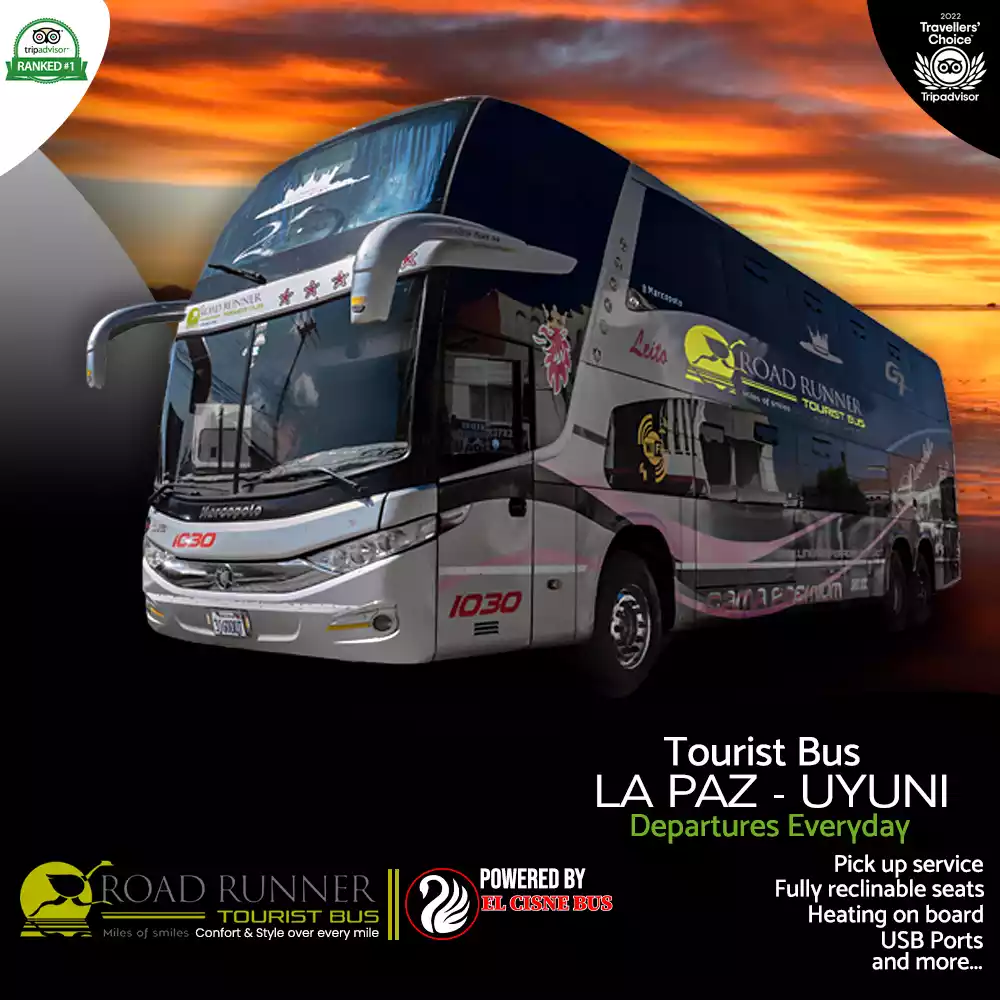
La paz – uyuni bus PROMOTION
The only company that has: – Pick up service. – Travel concierge on board. – Fully reclinable seats. – 2 seats per row with a great space for your legs. – Heating on board. – USB Ports – Dinner and breakfast. – Online payment. DEPARTURE EVERY DAY! 21:15 hrs. Best Price: $us 33 PP.

Uyuni Bolivia Salt Flats Promotion
The Uyuni Salt Flats or – Salar de Uyuni – is the highlight of any trip to Bolivia, as it represents a unique experience, impossible to equal anywhere else in the world. Get our Uyuni Bolivia Salt Flats Tour offer today!

one death road
Providing the ultimate biking experience with best price in market!. 58$us! You won’t find better price! Quality of service supported by Altitude Travel
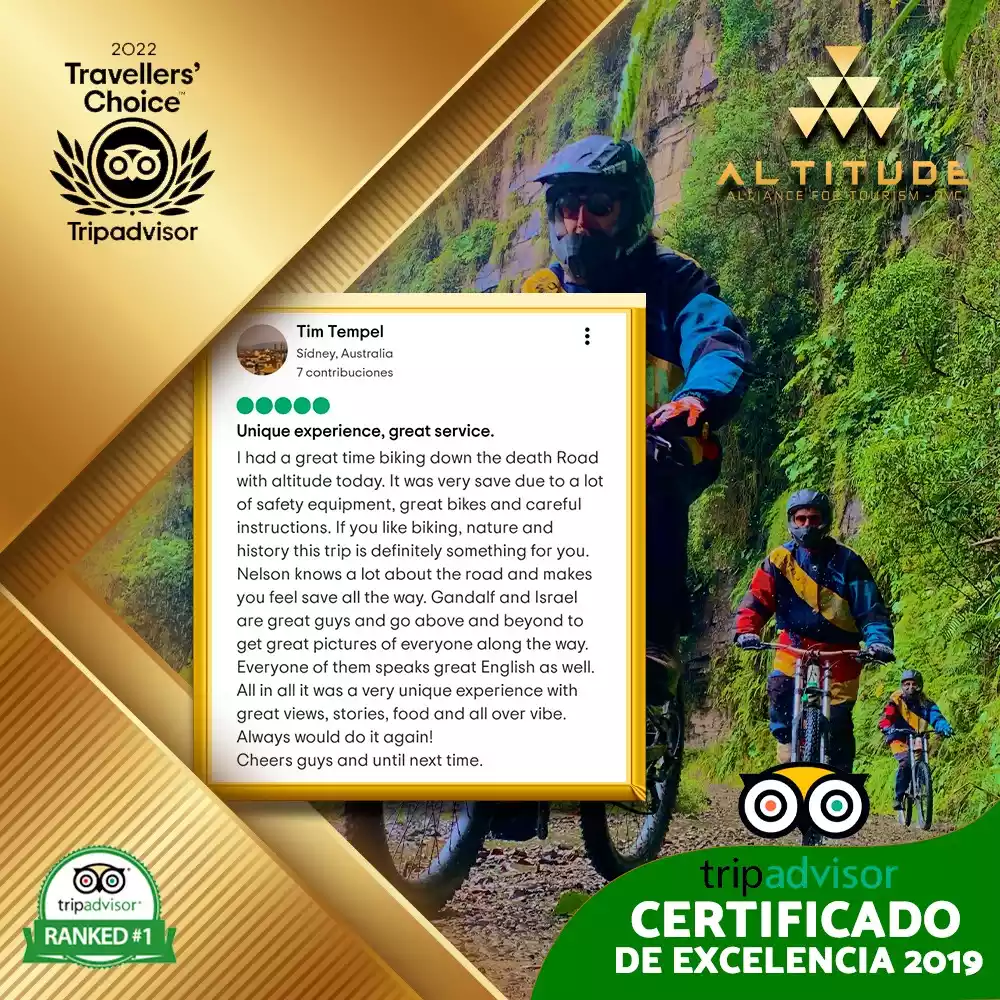
Javascript is disabled on your browser. Please enable it in order to use this form.
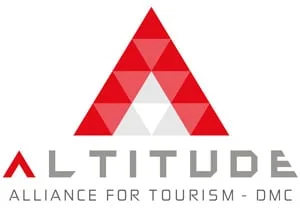
Altitude Travel Booking Form place held for up to 2 days, no payment required
Your form has been submitted.
Thank you %NAME% for sending your query. You can view your request anytime from this link below: %TRACK_LINK% We have also attached a copy of your submission.
We faced problems while connecting to the server or receiving data from the server. Please wait for a few seconds and try again.
If the problem persists, then check your internet connectivity. If all other sites open fine, then please contact the administrator of this website with the following information.
TextStatus: undefined HTTP Error: undefined
Some error has occured.
MARCELO CONCHA
Flor pamela flores salazar.
My name is Flor Pamela, I worked in the hotel sector for approximately 7 years in one of the most important hotels in Bolivia, I was in charge of the reservations, over time the Hotel developed a small tour operator, and there I discovered my interest in inbound tour operations. So, now I am in Altitude, one of the fastest growing companies in the country’s tourism sector. Here I develop my capacity in the Inbound Operations Department, the work is very active and interesting because of the movement that Altitude has.
VIVIANA CUSI
My name is Viviana, I’m a part of Altitude’s team for almost 2 years now. I graduated in tourism, and my position in the company helps me to develop many skills that I acquired during my preparation. As I am passionate about my career I find that Altitude is the perfect scenery to grow and improve my abilities. I am a Bolivian that is completely proud to be born in a country with such diversity and magic, and I also feel lucky to be able to show this awesomeness to the world.
DANIELE ALI TAPIA
Leidy rodriguez, jose urquidi, agustin sanchez, emerson añawaya, naydi trujillo revollo.
My name is Naydi Laura Trujillo Revollo and I am 23 years old. The most important thing for me is my family, my boyfriend and our little puppy named Tattoo. I love to travel and to know new places. New Adventures? I’m in! I am very cheerful, easy going and open-minded, but I maintain my values and beliefs. Do what you have to do to be happy, without causing anyone harm
VERONICA QUISBERT SALGUEIRO
I like my job with a little bit of sparkle. I love weekends having amounts of moments in family, watching movies, listenig music, spontaneous trips, and learning about all the things I thought I knew but now realize I had no idea about. Perfect days are going for a hike, followed by a visit to a new local cafe or trying a new dinner spot and taking a walk nearby. I work hard during the week, fill my weekends with activities, and definitely can be a big ball of energy at times. So, I will be here to help you!
JORGE QUISPE POMA
Helen lijeron bernal, juan marcelo clavijo brito, rodrigo alvarez zapata, maria de los angeles coro, dayner valda montenegro.

IMAGES
COMMENTS
CLIMBING BOLIVIA TRAVEL AGENGY, es una agencia de viajes especializada en turismo receptivo en Bolivia. Nos encontramos localizados geográficamente en la ciudad de La Paz y operamos desde aquí viajes en la Cordillera Real y la Cordillera Occidental y a los principales destinos turísticos.
Bolivia has amazing mountains, suitable for all experience levels. Bespoke Itineraries. Flexible travel planning, designed to suit your interests and level of experience. Trekking. ... We are one of the few agencies in the country to use exclusively certified mountain guides. Many of our guides are part of the national Mountain Rescue team.
Climbing Bolivia Travel Agency and their director, Juan Carlos Limachi, provided me with a personalized and progressive program that was exactly what I wanted: Acclimatization to high altitude, trekking and mountain climbing. They included professional guides and cooks, as well as all the necessary information and gear for my trip to be ...
ABOUT US. Bolivia Discovery is a company specialized in high mountain guides. We offer unique and safe experiences thanks to our UIAGM/IFMGA certified guides and highly trained team. We strive to discover the natural beauty of Bolivia and share it with our clients. We are adventure lovers, eager to discover more and more, make it different.
Discover the Bolivian Mountains with us! Due to a lack of accurate and updated information on trekking and climbing, Eduardo Mamani Q., a mountain guide with international certification (UIAGM / IFMGA) created this site where you will find all the information and assistance you require. We specialize in high altitude, mountaineering, climbing ...
Bolivia's Cordillera Real (Royal Range) contains seven peaks above 6,000 meters and over 600 peaks above 5,000 meters, all packed within a range that stretches a mere 78 miles/125 km in length. Despite the immensity of climbing possibilities, Bolivia's premier mountain range remains one of South America's best kept climbing secrets.
Climbing South America has assembled a team of highly skilled and professional individuals, some of whom are internationally certified mountain guides. Climbing South America has developed a range of once in a lifetime climbs, treks, 4x4 tours and much more throughout South America. La Paz, Bolivia. Contact.
BOLIVIA: Bolivia se halla ubicada en el Centro de Sud América, tiene parte de Los Andes y la Amazonia al mismo tiempo, esto se traduce en fantásticos panoramas, impresionantes montañas cubiertas de nieves eternas a mas de 6000 Mts. de altura y profundas e inexploradas selvas en los Valles y la Jungla, como también áreas Volcánicas fantásticamente formadas junto a lagos de Sal y ...
Travel agency CLIMBING BOLIVIA. Read more. La Paz, Bolivia. Email. Visit website. Contact. Suggest edits to improve what we show. Improve this listing. Similar Experiences. 2024. Death Road Bolivia Biking Tour. 2,713. Full-day Tours. from . C$172.66. per adult. Visit to Uyuni Salt Flats from La Paz Bolivia by Bus. 21.
We are an adventure travel agency, specialized in Bolivia and expert in mountain climbing. We have an unbeatable pioneer spirit and offer tailor made trips, unique and quirky, everywhere in Bolivia but also in neighbour countries, like Peru, Chile and Argentina! See all our trips Discover our SOS MAM service. Local travel agency in Bolivia.
Travel agency CLIMBING BOLIVIA. Read more. La Paz, Bolivia. Email. Visit website. Contact. Suggest edits to improve what we show. Improve this listing. Revenue impacts the experiences featured on this page, learn more. Similar Experiences. 2024. Death Road Bolivia Biking Tour. 2,683. Full-day Tours.
CLIMBING BOLIVIA es una agencia que nace en La Paz con la iniciativa de mejorar la. industria del turismo en La Paz, con el propósito de dar más alternativas a turistas nacionales. y sobre todo extranjeros que buscan nuevas experiencias, circuitos, caminatas y escalada en. hielo, nuestro staff esta trabajando en la apertura de nuevas rutas de ...
Climbing Bolivia Travel Agency and their director, Juan Carlos Limachi, provided me with a personalized and progressive program that was exactly what I wanted: Acclimatization to high altitude, trekking and mountain climbing. They included professional guides and cooks, as well as all the necessary information and gear for my trip to be ...
Travel agency CLIMBING BOLIVIA. Read more. La Paz, Bolivia. Email. Visit website. Contact. Suggest edits to improve what we show. Improve this listing. Similar Experiences. 2024. Death Road Bolivia Biking Tour. 2,698. Full-day Tours. from . $125.00. per adult. Death Road, Bolivia: Mountain Bike Tour on the World's Most Dangerous Road. 612. Full ...
Climbing Bolivia Travel Agency and their director, Juan Carlos Limachi, provided me with a personalized and progressive program that was exactly what I wanted: Acclimatization to high altitude, trekking and mountain climbing. They included professional guides and cooks, as well as all the necessary information and gear for my trip to be ...
Let the world see your experience through your eyes. Ask fellow travellers and attraction managers your top questions. Climbing Bolivia Travel Agency, La Paz: See reviews, articles, and photos of Climbing Bolivia Travel Agency, ranked No.188 on Tripadvisor among 195 attractions in La Paz.
Perla de Bolivia prioritizes convenience with the option to book tours via WhatsApp, ensuring accessibility for travelers with busy schedules or those unable to visit their offices in person. #9 Thaki Travel. Thaki Travel, a leading Bolivia travel agency based in La Paz, specializes in adventure tourism with a particular expertise in mountain ...
How to Book a Huayna Potosi Climbing Tour. Booking in person once you get to La Paz is the best way to book your Huayna Potosi climbing tour. Prices online are at least $100 USD more than prices we were quoted face to face. All Transport Tours in the tourist district of La Paz is a reputable company with experienced and expert guides.
Welcome. to SouthTreks, your premier choice for exploring the wonders of Bolivia! As a top Tour Operator & Travel Agency, we specialize in unforgettable destinations as the mesmerizing Salar de Uyuni, the towering Huayna Potosi, the picturesque Copacabana, the stunning Charquini, the challenging Choro Trail, the hidden gem of Sorata, the ...
Bolivia Adventure Planet Expeditions A travel agency that works in Bolivian's moutina ranges, Aconcagua and Patagonia. Offers guides, expeditions and logistic support. Bolivian Journeys Bolivia climbing specialists based in La Paz, expeditions and logistics throughout the bolivian Andes. www.bolivianjourneys.org mail:[email protected]
Death Road Bolivia with Altitude Travel a creative and highly qualified team full of passion and committed to work towards our dreams and goals. +591 71534410 [email protected] Facebook
114 Followers, 29 Following, 14 Posts - Climbing Bolivia (@climbingbolivia) on Instagram: "AGENCIA DE TURISMO DE AVENTURA CLIMBING BOLIVIA"
Climbing Bolivia Climbing Bolivia is a travel agency in La Paz, Altiplano located on Calle Linares. Climbing Bolivia is situated nearby to the museum Museo de la Coca and the park Gatón Velasco Carrasco Plaza.